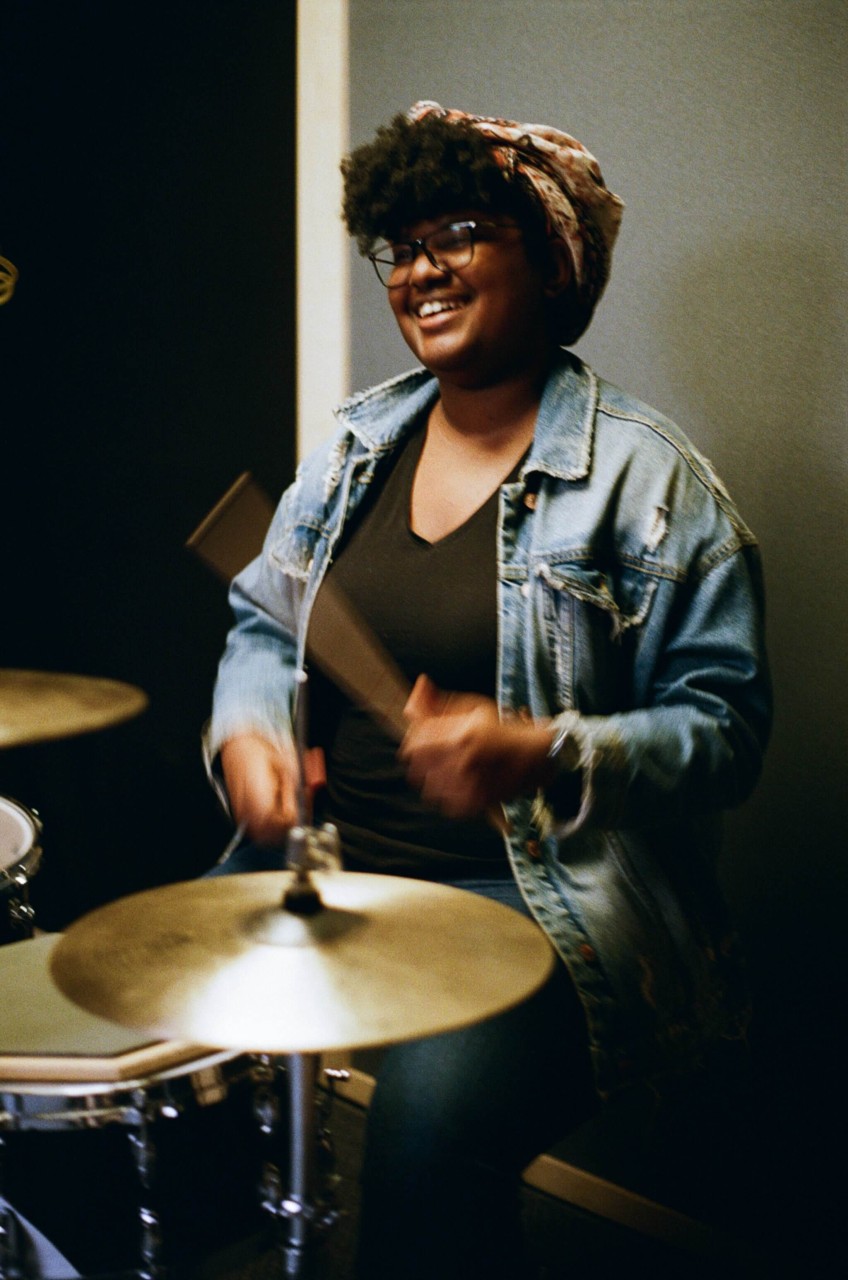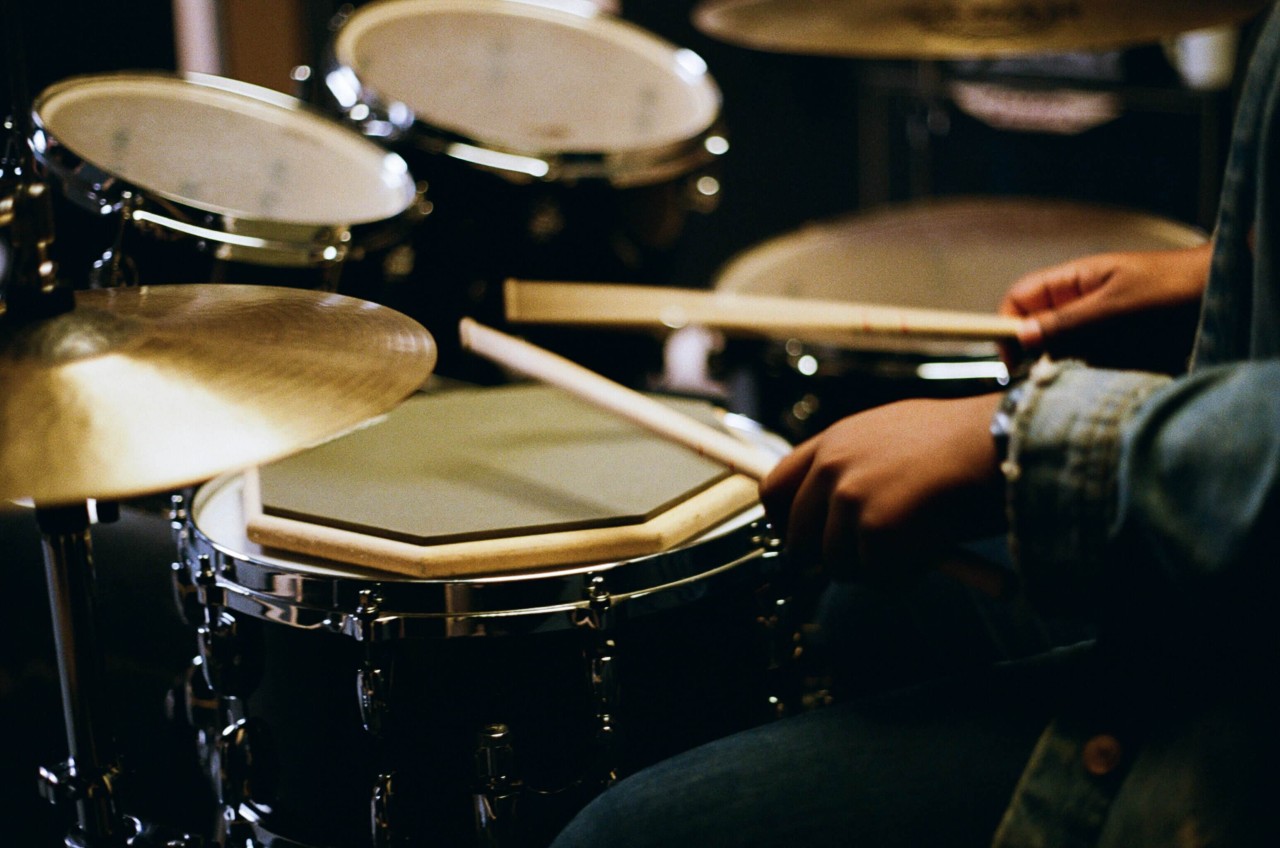
■ Features
Jaleesa Gemerts (Lady Groove) is a music producer, drum instructor and performer who earned her stripes recording with the likes of George Ezra. She’s also a regular in the Pirate drum practice studios where she rehearses and teaches drum lessons.
In this article, Jaleesa covers how to choose the best drumsticks for beginners, how to find the fulcrum, and how to hold drumsticks correctly using French Grip, German Grip, American Grip and Traditional Grip.
To hone your skills as a band, producer, DJ or dancer, book a Pirate.com studio in the UK, US or Germany now.

When it comes to purchasing your first pair of drumsticks, the level of choice can be overwhelming.
The type of drumsticks that you go for depends on the sound you prefer. Some drummers prefer thick sticks with pointy tips, others prefer thin sticks with a rounded tip. Personally, I use the Tony Royster sticks which fall into the latter category.
For beginners, I always recommend starting out with either 5A drumsticks or 7A drumsticks.
Don't worry if it takes you a while to find your perfect pair. A friend of mine has been playing drums for 25 years and they're still changing drumsticks. As a beginner, you shouldn't agonise over finding flawless sticks right away, grab a pair of 5As or 7As and just get started.
Now that you have your drumsticks, the first thing you need to do is find your fulcrum. The fulcrum is the balance point and the best place to hold your sticks.
You can find the perfect spot to hold your stick by bouncing it off your drum. The point where it bounces the longest and feels comfortable is your fulcrum point.
If your grip is too low on the stick, it won’t bounce back far enough when you hit the drum. If you're too high, you've got zero control.
Matched grip is the most commonly used drumstick grip. Matched grip means both hands should be mirror images of one another while you're playing. Hence, your right and left hands match.
There are three different variants of matched grip: French, German and American. It's important to learn all three to give you greater flexibility while drumming.
Reasons you may want to change between grips during a set include:
The Germanian grip is great for playing loud which makes it a popular style for rock drumming, corps drumming and most heavy music. This grip is very recognisable by the angle at which you hold your sticks.
To play using German grip, hold your stick at the fulcrum with your thumb and index finger. Then, place your other fingers on the bottom of the stick. Now place your sticks on the snare drum, and try to make a 90 degree angle with them. When you find this angle, you will notice your elbows stick out a little - this is the exact position that you want.
With French grip, you'll be using your wrist less than you would with German grip, and you'll use your fingers more. The most unique element of this style is that the way you're holding your sticks changes from having your palms face down to face up. This will afford you more speed but less power.
Allow your arms to relax before bringing your sticks together so they're almost parallel. Put pressure between your thumb and your index finger and use that tension to control how the stick bounces. Your fingers are there to help move the stick up and down and to make sure it doesn't move from side to side.
American grip is popularly considered a grip that’s somewhere between the French and German styles. It's the most common style of drumming across genres, largely because it's the most comfortable.
Instead of having your elbows out and your sticks at a 90 degree angle, as you would when playing German grip, relax your arms and allow them to fall more naturally. Your sticks should come in a little, closer to your body, cutting your angle to about 45 degrees.
Traditional grip is not a variant of matched grip. Playing traditional grip, was initially reserved for marching bands holding their snare drums on their hip. From there, it evolved into a style used for jazz and jazz fusion. Nowadays, the main reason drummers learn how to hold drumsticks traditional grip style is for aesthetic purposes.
The traditional grip snare finger technique is slightly more difficult than playing matched grip. To play using traditional grip, you need to hold the stick with your palms facing up. From here, put the bottom of your drumstick between your thumb and index finger. Then, put the rest of the stick between your middle and ring finger. Now, slide your hand up to your fulcrum point and just rest your fingers on the sticks and under the sticks. You shouldn't be balling a fist, allow your fingers to feel relaxed.

Theoretically, you should now understand traditional grip and the three types of matched grip.
The drum stick grips you've just learned can be used across your entire kit; once you’ve mastered these, you should also know how to hold tenor drum sticks, how to hold snare sticks, and how to hold drumsticks when playing toms.
In your practice sessions, you'll soon discover which grip feels right for each move you make behind the kit. All that's left to do now is book a drum studio and get practicing.